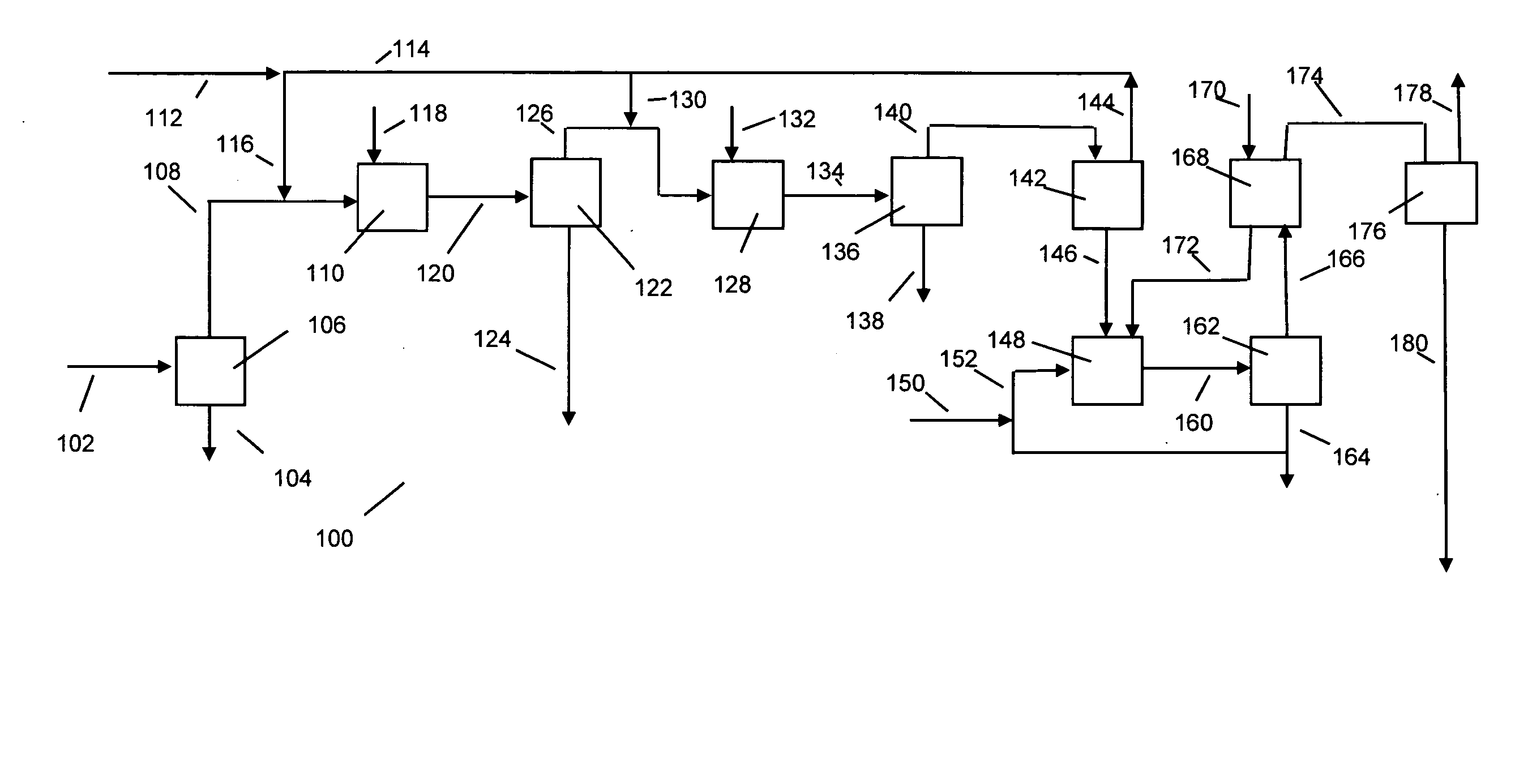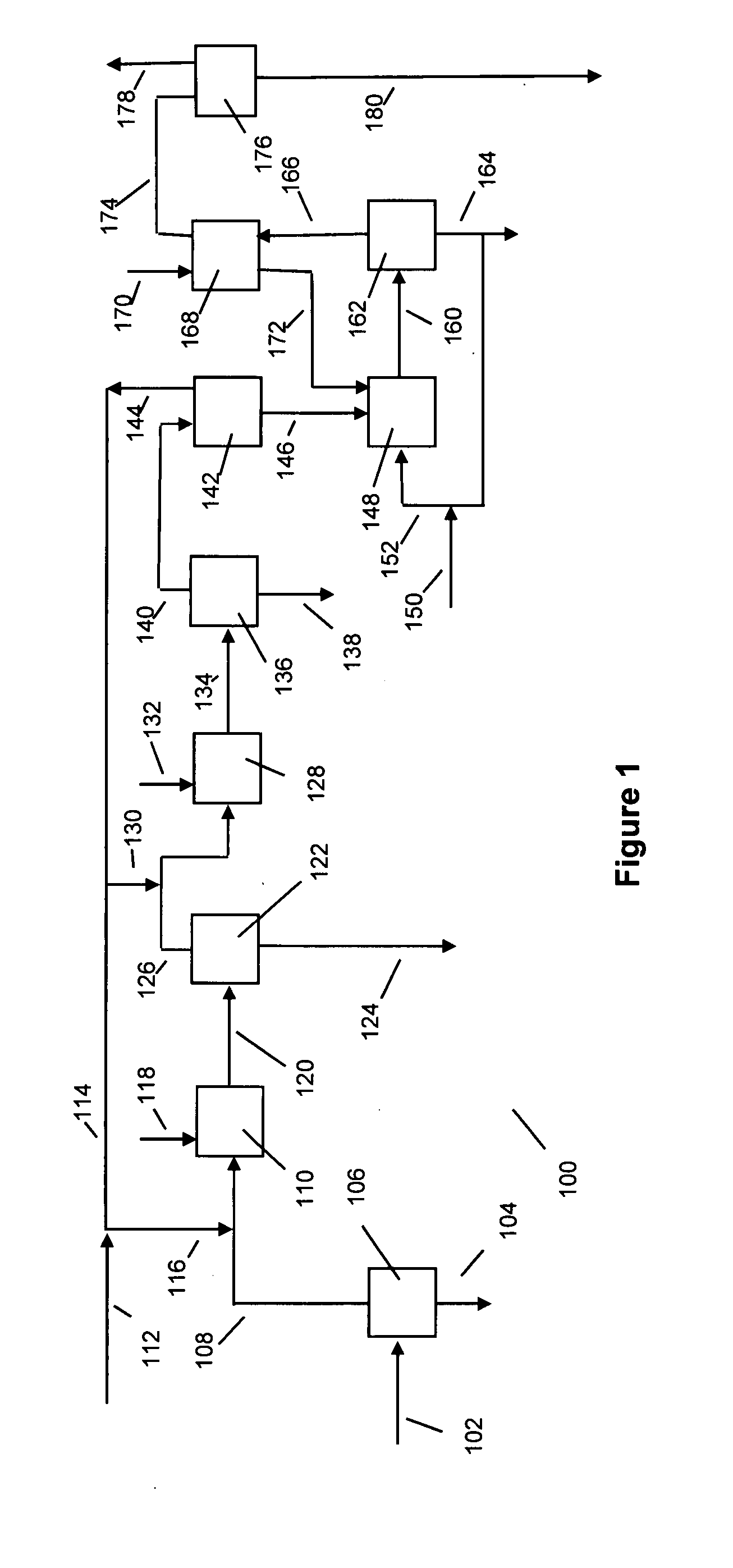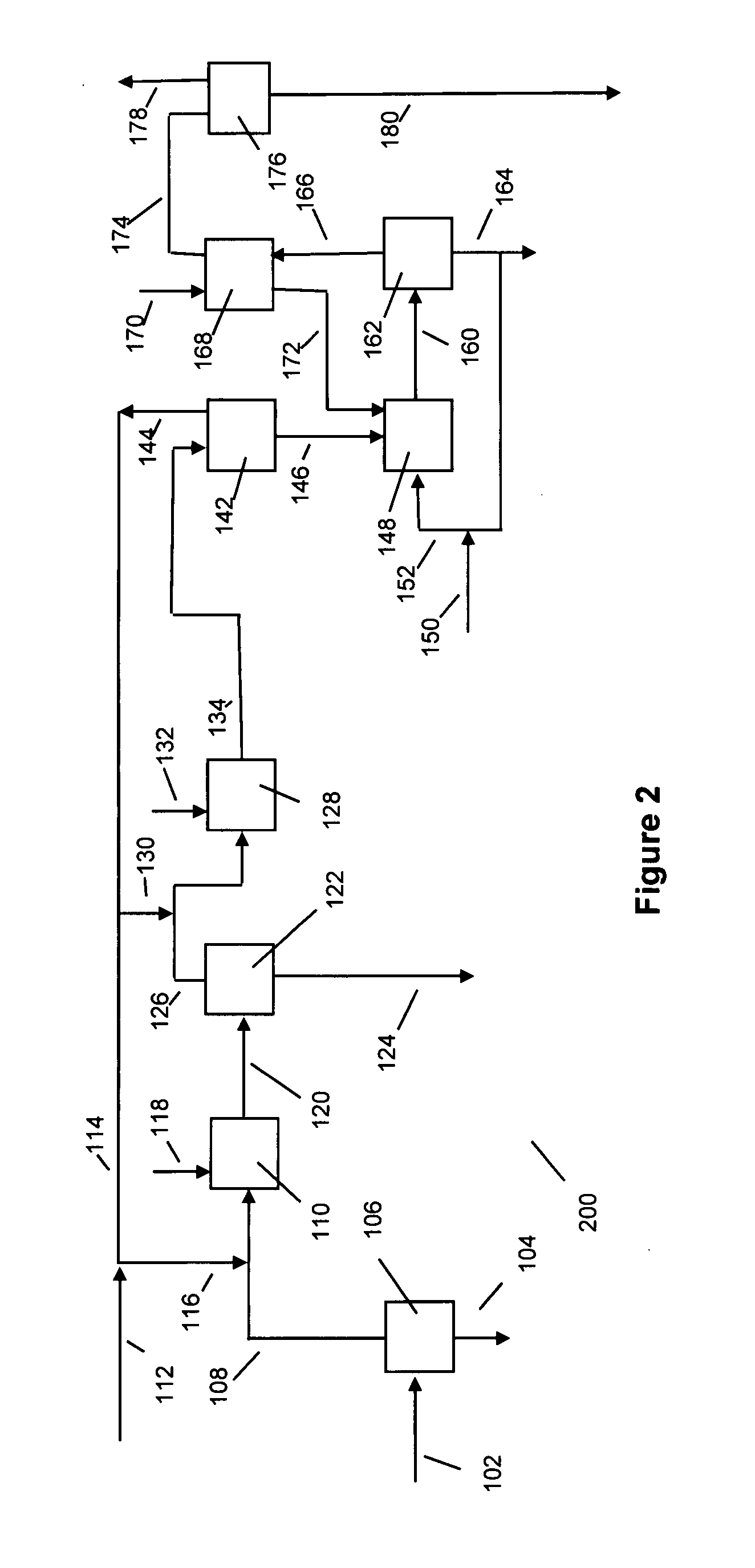Biodiesel production with enhanced alkanol recovery
a biodiesel and alkanol technology, applied in the field of biodiesel synthesis, can solve the problems of reducing the overall alkanol recovery and increasing the loss of alkanol to the environment, and achieve the effect of reducing water
- Summary
- Abstract
- Description
- Claims
- Application Information
AI Technical Summary
Benefits of technology
Problems solved by technology
Method used
Image
Examples
Embodiment Construction
[0032] The following discussion is in reference to the facility depicted in the Figures. The Figures are not intended to be in limitation of this invention.
[0033] With respect to FIG. 1, biodiesel manufacturing facility 100 uses a suitable raw material feed provided via line 102. The feed may be one or more suitable oils or fats derived from bio sources, especially vegetable oils and animal fats. Examples of fats and oils are rape seed oil, soybean oil, cotton seed oil, safflower seed oil, castor bean oil, olive oil, coconut oil, palm oil, corn oil, canola oil, jatropha oil, rice bran oil, tobacco seed oil, fats and oils from animals, including from rendering plants and fish oils. The oils and fats may contain free fatty acids falling within a broad range. Generally, the free fatty acid in the raw material feed is less than about 60, and unless pretreatment occurs to remove free fatty acids, preferably less than about 10, mass percent (dry basis). The balance of the fats and oils i...
PUM
| Property | Measurement | Unit |
|---|---|---|
| temperature | aaaaa | aaaaa |
| length | aaaaa | aaaaa |
| diameter | aaaaa | aaaaa |
Abstract
Description
Claims
Application Information
 Login to View More
Login to View More - R&D
- Intellectual Property
- Life Sciences
- Materials
- Tech Scout
- Unparalleled Data Quality
- Higher Quality Content
- 60% Fewer Hallucinations
Browse by: Latest US Patents, China's latest patents, Technical Efficacy Thesaurus, Application Domain, Technology Topic, Popular Technical Reports.
© 2025 PatSnap. All rights reserved.Legal|Privacy policy|Modern Slavery Act Transparency Statement|Sitemap|About US| Contact US: help@patsnap.com



